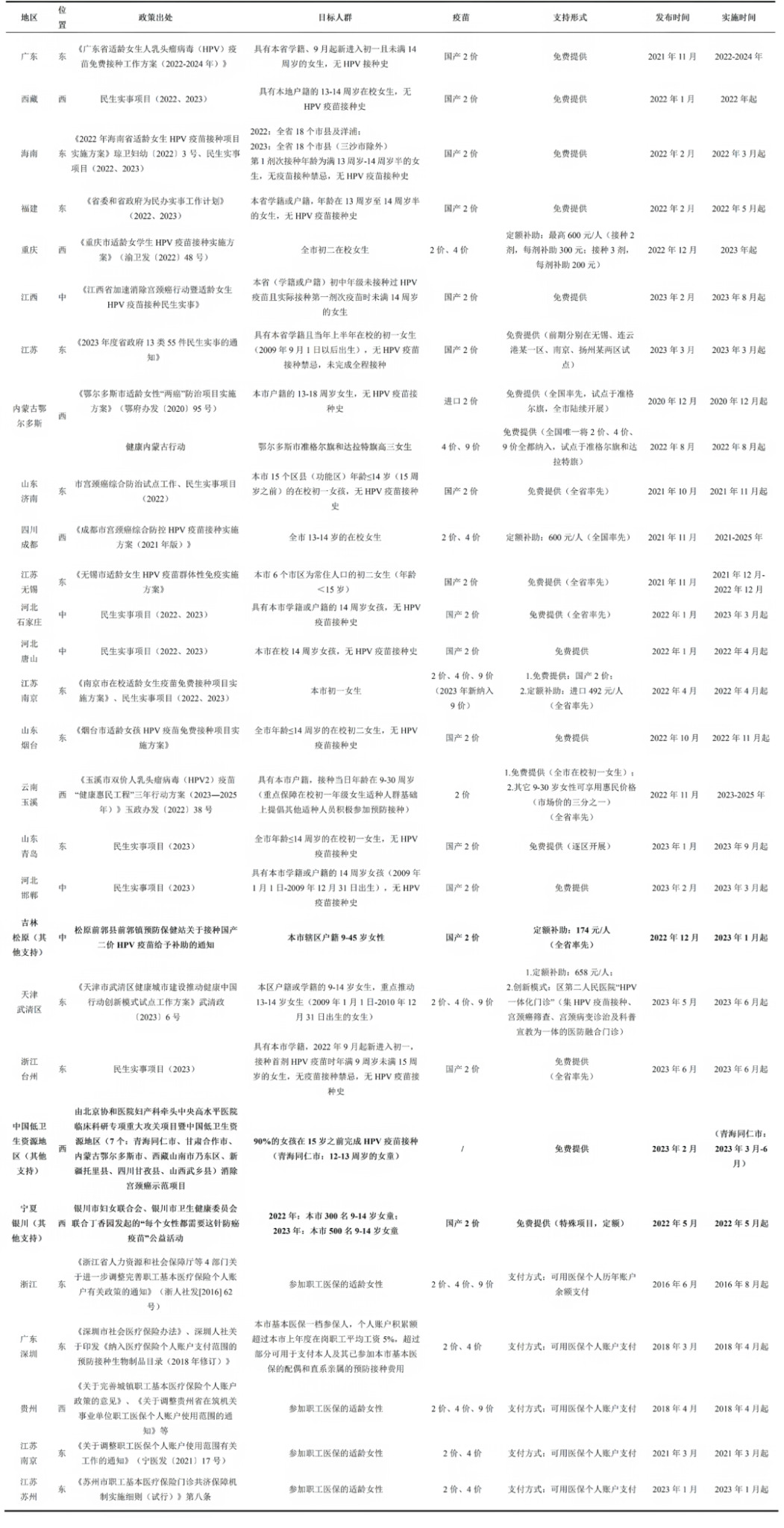接种者角度
儿童免疫接种是降低儿童发病率和死亡率的最具成本效益的公共卫生干预措施之一。提高疫苗接种依从性对于最大化疫苗效力、预防传染性疾病大规模爆发来说至关重要。数项早期研究已经证实,儿童用联合疫苗(特别是含有百日咳、白喉、破伤风及b型流感嗜血杆菌抗原成分的联合疫苗)相比较传统单价疫苗而言,不仅可以帮助提升疫苗接种依从性,还可以增加接种及时性、减少未能及时免疫的儿童数量1,2,3。
另有研究指出,联合疫苗会增加受种者的风险的论断有待进一步验证。事实上,单独接种百日咳、白喉、破伤风三种疫苗而导致的不良事件总和,超过接种百白破三联疫苗导致的不良事件数量。因此,联合疫苗或可降低潜在不良事件的发生风险4。
此外,儿童接种疫苗时经受的疼痛长期以来一直是接种者本身、照护者及医务工作者关注的重要问题。多项学术研究表明,联合疫苗通过减少接种次数,有效减轻了婴幼儿的恐惧、并帮助儿童规避了额外的疼痛感和不适5,6,7,8。
照护者角度
联合疫苗对于照护者来说也具有优势。一项在中国全国范围内进行的横断面研究利用成本最小化分析(CMA)方法测算了与DTaP-IPV-Hib五联疫苗相关的直接医疗、直接非医疗(照护者需承担的交通费)和间接社会(照护者误工费)成本。研究结果发现,如果在中国使用DTaP-IPV-Hib五联疫苗取代现行接种方案,虽然直接医疗成本会增加,但直接非医疗(照护者需承担的交通费)与间接社会(照护者误工费)成本都将下降。总体上看,在中国使用DTaP-IPV-Hib五联疫苗可以降低成本9。另一项来自美国的研究观察到,为儿童接种联合疫苗可以大幅节约照护者的时间和精力10。
有研究者发现,正因为联合疫苗可以减轻受种者的疼痛并节省多种成本,照护者对于儿童用联合疫苗表现出更高的接受度和支付意愿11。平均而言,照护者愿意为减少一针儿童疫苗注射额外支付10至25美元12。
医务人员角度
一项实验研究发现,护士给一名儿童每多注射一针疫苗,就需要额外花费1.7至2.4分钟,儿童也会因不适与恐惧多哭闹0.4至1分钟13,14。因此,通过应用联合疫苗,在减少注射次数的同时也将会显著减轻医务人员的工作量并提高工作效率。另有研究指出,因为只需处理更少量的注射器,使用联合疫苗能有效避免医务人员被注射针头刺伤及其他错误发生的风险15,16。
国家公共卫生体系角度
联合疫苗可为国家卫生体系带来巨大改善,其中最直观的改变就是推广联合疫苗可以减少包括物流、仓储、运筹管理及人力成本等卫生系统的支出18,17,18,19。
现有研究证明,应用联合疫苗也对增加疫苗覆盖率、降低疾病负担有益20,21,22。早在1999年,一项来自美国的研究就曾提出,如果将乙型肝炎疫苗纳入联合疫苗,就可使乙肝病毒感染病例数减少53%。与此同时,该策略可显著降低乙肝病毒相关死亡率,预计每 100 万婴儿中将减少 205 例死亡。此外,该组合策略的增量成本效益比(ICER)为每生命年节约17700美元23。一项多国面板数据分析显示,研发含有额外抗原的联合疫苗有助于维持并提高现有和新型儿童疫苗的覆盖率。与引入联合疫苗之前相比,在引入联合疫苗后,全球范围内百日咳、白喉、破伤风三联疫苗的覆盖率提高了约3%24。
此外,使用儿童用联合疫苗还将起到优化免疫程序的作用25,26,27。例如,当法国国家免疫规划中纳入了六联疫苗等联合疫苗后,应接种的疫苗总剂次从21至25剂减少到了10剂。因此,应用联合疫苗将有利于资源统筹、缩减管理成本,以及提高免疫程序效率。
根据中国国家免疫规划,除出生时接种的1剂卡介苗和1剂乙肝疫苗外,2岁以下儿童共有15剂次免疫规划疫苗需要接种。此外,还有16剂非免疫规划疫苗可选择接种,包括13价肺炎球菌多糖结合疫苗(PCV13)、b型流感嗜血杆菌疫苗(Hib)、轮状病毒疫苗、流感疫苗、水痘疫苗、EV71疫苗等28。值得注意的是,在我国尚未将WHO优先推荐的3种疫苗( Hib 疫苗、PCV 疫苗和轮状病毒疫苗)纳入免疫规划的情况下,2 岁以下儿童的接种剂次就已超过美国的 12 剂次。若将上述3种疫苗纳入免疫规划,不包括出生剂次疫苗,我国2岁以下儿童至少需接种27剂次疫苗。因此,应用联合疫苗有利于降低儿童接种次数,优化免疫程序。有研究人员进行了细致的成本估算,结果发现,将一剂b型流感嗜血杆菌疫苗作为五联疫苗抗原成分(DTP-HepB-Hib)的一部分纳入接种计划的成本为2.80美元,作为四联疫苗抗原成分(DTP-Hib)的一部分,成本为3.10美元,而如果作为传统单价疫苗提供,所需成本则为3.40美元15。
从研发机构角度出发,与传统单价疫苗相比,联合疫苗可以帮助疫苗生产厂商降低研发相关成本29,并为企业提供创新动力20。现有研究结果显示,相较于单价疫苗,联合疫苗的研发在成本效益方面更具优势。具体而言,联合疫苗的研发成本相对较低,且其研发的联合程度越高,所需的花费也越低。
审核校对:李周蓉,邓添艺
参考文献
1 Hadjipanayis A. (2019). Compliance with vaccination schedules. Human vaccines & immunotherapeutics, 15(4), 1003–1004. https://doi.org/10.1080/21645515.2018.1556078
2 Kalies, H., Grote, V., Verstraeten, T., Hessel, L., Schmitt, H. J., & von Kries, R. (2006). The use of combination vaccines has improved timeliness of vaccination in children. The Pediatric infectious disease journal, 25(6), 507–512. https://doi.org/10.1097/01.inf.0000222413.47344.23
3 Melman, S. T., Nguyen, T. T., Ehrlich, E., Schorr, M., & Anbar, R. D. (1999). Parental compliance with multiple immunization injections. Archives of pediatrics & adolescent medicine, 153(12), 1289–1291. https://doi.org/10.1001/archpedi.153.12.1289
4 Halsey N. A. (2001). Safety of combination vaccines: perception versus reality. The Pediatric infectious disease journal, 20(11 Suppl), S40–S44. https://doi.org/10.1097/00006454-200111001-00007
5 Aljunid, S. M., Al Bashir, L., Ismail, A. B., Aizuddin, A. N., Rashid, S. A. Z. A., & Nur, A. M. (2022). Economic impact of switching from partially combined vaccine “Pentaxim® and hepatitis B” to fully combined vaccine “Hexaxim®” in the Malaysian National Immunization Program. BMC health services research, 22(1), 34. https://doi.org/10.1186/s12913-021-07428-7
6 Koslap-Petraco, M. B., & Parsons, T. (2003). Communicating the benefits of combination vaccines to parents and health care providers. Journal of pediatric health care: official publication of National Association of Pediatric Nurse Associates & Practitioners, 17(2), 53–57. https://doi.org/10.1067/mph.2003.42
7 Di Fabio, J. L., & de Quadros, C. (2001). Considerations for combination vaccine development and use in the developing world. Clinical infectious diseases: an official publication of the Infectious Diseases Society of America, 33 Suppl 4, S340–S345. https://doi.org/10.1086/322571
8 Elliman, D., & Bedford, H. (2003). Safety and efficacy of combination vaccines. BMJ (Clinical research ed.), 326(7397), 995–996. https://doi.org/10.1136/bmj.326.7397.995
9 Liu, B., Cao, B., Wang, C., Sun, T., Miao, Y., Zhang, S., Zhao, T., & Cui, F. (2023). Cost-minimization analysis of DTaP-IPV-Hib combination vaccine in China: A nationwide cross-sectional study. Journal of medical virology, 95(1), e28358. https://doi.org/10.1002/jmv.28358
10 Pellissier, J. M., Coplan, P. M., Jackson, L. A., & May, J. E. (2000). The effect of additional shots on the vaccine administration process: results of a time-motion study in 2 settings. The American journal of managed care, 6(9), 1038–1044.
11 Lieu, T. A., Black, S. B., Ray, G. T., Martin, K. E., Shinefield, H. R., & Weniger, B. G. (2000). The hidden costs of infant vaccination. Vaccine, 19(1), 33–41. https://doi.org/10.1016/s0264-410x(00)00154-7
12 Meyerhoff, A. S., Weniger, B. G., & Jacobs, R. J. (2001). Economic value to parents of reducing the pain and emotional distress of childhood vaccine injections. The Pediatric infectious disease journal, 20(11 Suppl), S57–S62. https://doi.org/10.1097/00006454-200111001-00009
13 Mullany L. (2003). Considerations for implementing a new combination vaccine into managed care. The American journal of managed care, 9(1 Suppl), S23–S29.
14 Pellissier, J. M., Coplan, P. M., Jackson, L. A., & May, J. E. (2000). The effect of additional shots on the vaccine administration process: results of a time-motion study in 2 settings. The American journal of managed care, 6(9), 1038–1044.
15 Maman, K., Zöllner, Y., Greco, D., Duru, G., Sendyona, S., & Remy, V. (2015). The value of childhood combination vaccines: From beliefs to evidence. Human vaccines & immunotherapeutics, 11(9), 2132–2141. https://doi.org/10.1080/21645515.2015.1044180
16 Wilburn, S. Q., & Eijkemans, G. (2004). Preventing needlestick injuries among healthcare workers: a WHO-ICN collaboration. International journal of occupational and environmental health, 10(4), 451–456. https://doi.org/10.1179/oeh.2004.10.4.451
17 Maman, K., Zöllner, Y., Greco, D., Duru, G., Sendyona, S., & Remy, V. (2015). The value of childhood combination vaccines: From beliefs to evidence. Human vaccines & immunotherapeutics, 11(9), 2132–2141. https://doi.org/10.1080/21645515.2015.1044180
18 Semenza, J. C., Sewe, M. O., Lindgren, E., Brusin, S., Aaslav, K. K., Mollet, T., & Rocklöv, J. (2019). Systemic resilience to cross-border infectious disease threat events in Europe. Transboundary and emerging diseases, 66(5), 1855–1863. https://doi.org/10.1111/tbed.13211
19 Bärnighausen, T., Bloom, D. E., Canning, D., Friedman, A., Levine, O. S., O’Brien, J., Privor-Dumm, L., & Walker, D. (2011). Rethinking the benefits and costs of childhood vaccination: the example of the Haemophilus influenzae type b vaccine. Vaccine, 29(13), 2371–2380. https://doi.org/10.1016/j.vaccine.2010.11.090
20 Swennen, B., & Lévy, J. (2004). La vaccination hexavalente [Hexavalent combined vaccination]. Revue medicale de Bruxelles, 25(4), A212–A218.
21 Restivo, V., Napoli, G., Marsala, M. G., Bonanno, V., Sciuto, V., Amodio, E., Calamusa, G., Vitale, F., & Firenze, A. (2015). Factors associated with poor adherence to MMR vaccination in parents who follow vaccination schedule. Human vaccines & immunotherapeutics, 11(1), 140–145. https://doi.org/10.4161/hv.34416
22 Happe, L. E., Lunacsek, O. E., Kruzikas, D. T., & Marshall, G. S. (2009). Impact of a pentavalent combination vaccine on immunization timeliness in a state Medicaid population. The Pediatric infectious disease journal, 28(2), 98–101. https://doi.org/10.1097/INF.0b013e318187d047
23 Fendrick, A. M., Lee, J. H., LaBarge, C., & Glick, H. A. (1999). Clinical and economic impact of a combination Haemophilus influenzae and Hepatitis B vaccine: estimating cost-effectiveness using decision analysis. Archives of pediatrics & adolescent medicine, 153(2), 126–136. https://doi.org/10.1001/archpedi.153.2.126
24 Khan, M. M., Vargas-Zambrano, J. C., & Coudeville, L. (2022). How did the adoption of wP-pentavalent affect the global paediatric vaccine coverage rate? A multicountry panel data analysis. BMJ open, 12(4), e053236. https://doi.org/10.1136/bmjopen-2021-053236
25 Dodd D. (2003). Benefits of combination vaccines: effective vaccination on a simplified schedule. The American journal of managed care, 9(1 Suppl), S6–S12.
26 Wiese-Posselt, M., Tertilt, C., & Zepp, F. (2011). Vaccination recommendations for Germany. Deutsches Arzteblatt international, 108(45), 771–780. https://doi.org/10.3238/arztebl.2011.0771
27 Wiedenmayer, K. A., Weiss, S., Chattopadhyay, C., Mukherjee, A., Kundu, R., Ayé, R., Tediosi, F., Hetzel, M. W., & Tanner, M. (2009). Simplifying paediatric immunization with a fully liquid DTP-HepB-Hib combination vaccine: evidence from a comparative time-motion study in India. Vaccine, 27(5), 655–659. https://doi.org/10.1016/j.vaccine.2008.11.045
28 Li, H., Tan, Y., Zeng, H., Zeng, F., Xu, X., Liao, Y., Zhu, Q., Zhang, M., Chen, X., Kang, M., Xu, F., & Zheng, H. (2020). Co-Administration of Multiple Childhood Vaccines – Guangdong Province, 2019. China CDC weekly, 2(1), 13–15.
29 Marcy S. M. (2003). Pediatric combination vaccines: their impact on patients, providers, managed care organizations, and manufacturers. The American journal of managed care, 9(4), 314–320.





